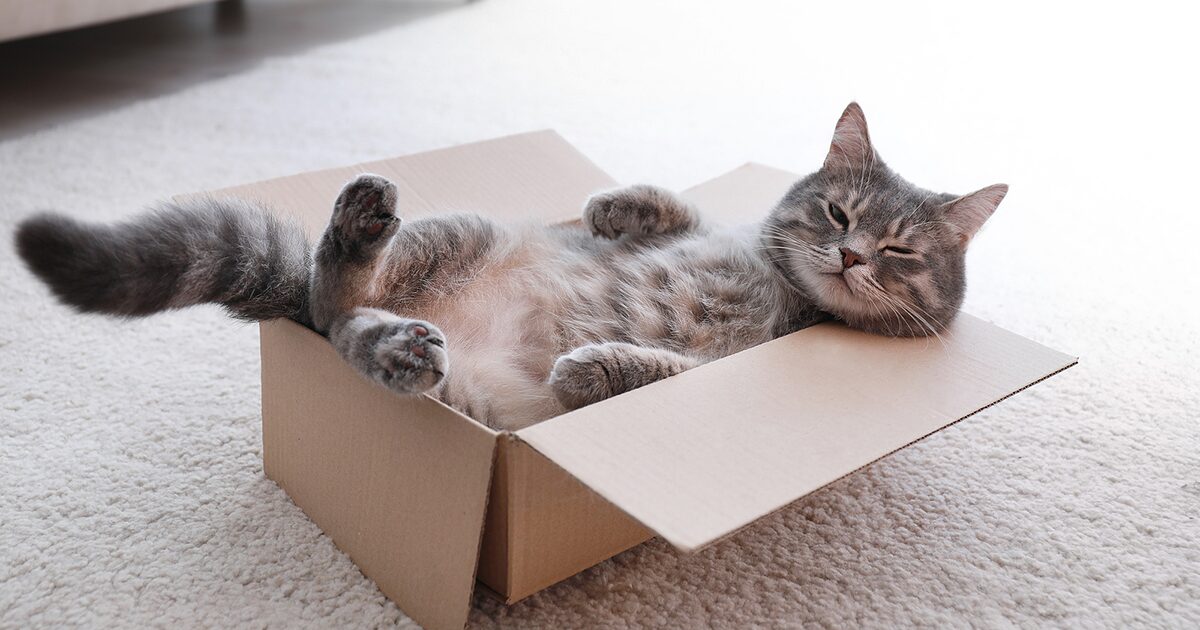Have you ever wondered what your cat is communicating through its tail? Cats are very expressive and communicative through their body language. The tail signs of cats are one of the most communicative in the entire animal kingdom. Read on to learn what your cat’s tail means and the best way to interact with your cat at different times.
Straight Up
When you see a cat with its tail positioned vertically, it means good things. Your cat is very content in this situation and most likely very happy in your presence. A cat never has its tail vertically straight up if it is scared, irritated, or unhappy in any way. When a cat’s tail is straight up, it is an excellent time to stroke, hold, cuddle, or engage your cat in play.
Question Mark
The question mark position also means that the cat is confident, content, and in a pleasant mood. More specifically, however, it indicates that the cat is intrigued, curious, and feeling adventurous. When a cat’s tail is in the question mark position, this is the perfect time to bring out the yarn, cat toys, or venture outside (attended).
Swishing
The translation of the swishing tail is known as the “hunting tail.” Whether it is playing or strictly meal-prepping business, the cat is completely enamored with what it is watching. When your cat’s tail is swishing, it is at peak focus level, is full of adrenaline, and is waiting for the perfect moment for an ambush-style attack.
Pointed Straight Down
A cat’s tail pointing down is not a sign of happiness, and it is usually the complete opposite. For some reason, the feline is discontent. You could be failing to meet its expectations, or it may be hearing or noticing something concerning. If petting your cat doesn’t resolve the situation, do not continue. If its perceived concern worsens, it could escalate to the “puffed” or “tucked” tail.
Puffed
A puffed tail, also known as the “Halloween cat,” means one thing and one thing only – great fear. Something has your cat completely frightened and wanting to run, hide, and or defend. Cats, like other animals, puff themselves up as a subconscious defense instinct to appear bigger than they are, hoping that whatever has them horrified for their safety will back off.
Tucked
A tucked tail is a more extreme iteration of the emotions indicated in the prior tail positions. At this point, the cat is so agitated and anxious that it has become submissive to its threat and is wishing to become invisible, as its confidence to withstand whatever threats are present is all but gone. The best course of action is to be present but not touch or force anything on the cat and allow space for de-escalation.
Wagging/Whipping
Unlike dogs, the quick back-and-forth movement of the tail means negative things for cats. If your feline friend is “wagging” its tail, instead of “swishing,” it indicates irritation, anger, or fear. National Geographic states that “a whipping tail on an alert cat can mean nervousness, aggression, and do not touch!”
Eyes Closed with Tapping Tail
You may have observed a cat lying down with its eyes closed as if asleep, yet its tail is slowly moving – sometimes even just the tip slowly tapping the surface on which it is resting. This means the cat noticed something happening around them and is remaining awake until the stimulation ceases.
Conclusion
Living with a cat is much more satisfying when you understand what they are communicating with their body language. There are many other aspects of their body language to consider, but the tail is certainly a starting point to understand your feline friend even more.




